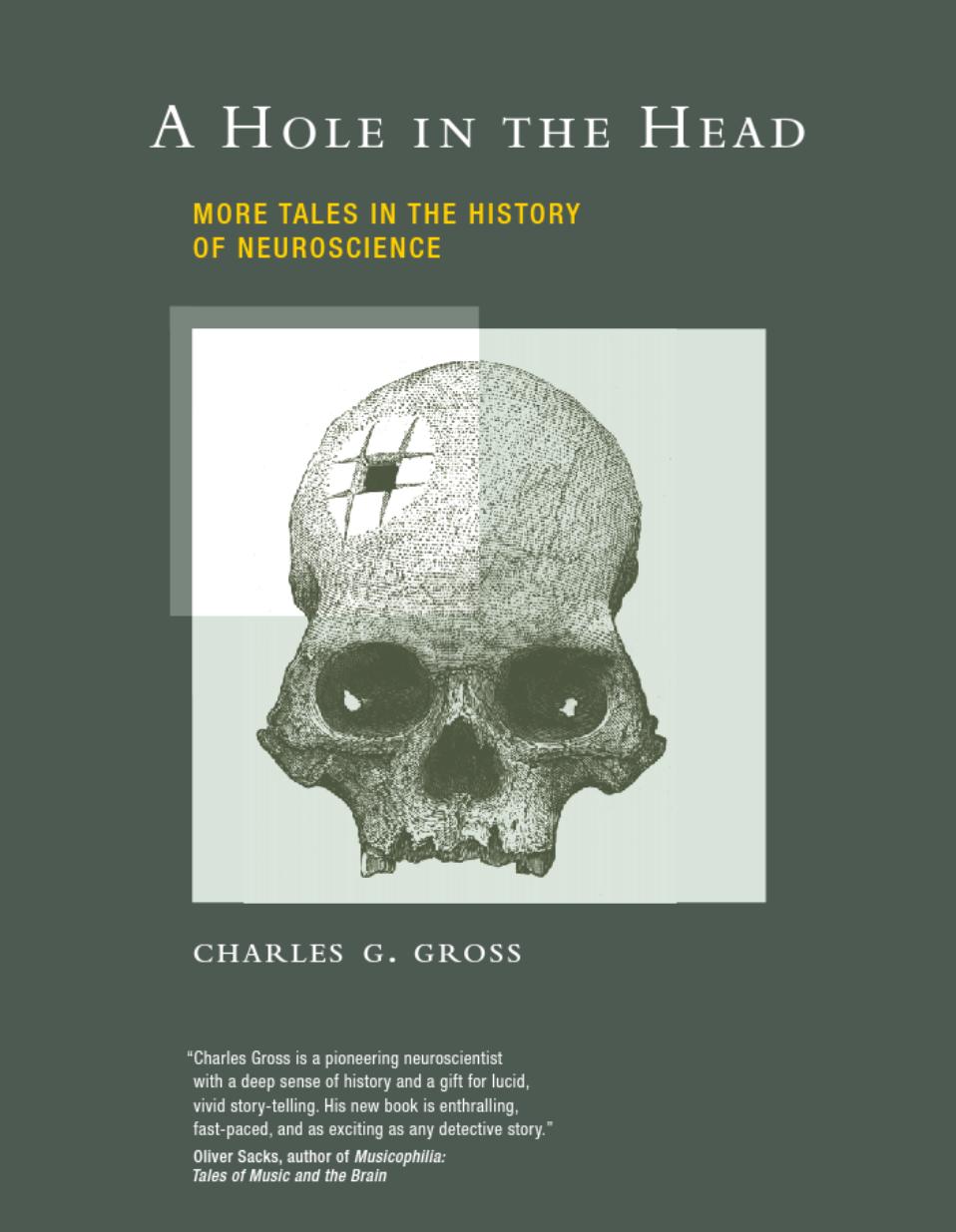A Hole in the Head: More Tales in the History of Neuroscience by Charles G. Gross

Author:Charles G. Gross [SPi]
Language: eng
Format: epub, pdf
Tags: psychology, History, Neuropsychology
ISBN: 9780262013383
Google: E15GmwEACAAJ
Publisher: MIT Press
Published: 2009-07-15T00:32:29.198013+00:00
9
BARTOLOMEO PANIZZA AND THE VISUAL BRAIN WITH MICHAEL COLOMBO AND ARNALDO COLOMBO
Bartolomeo Panizza (1785â1867) was the first person to produce experimental and clinicopathological evidence for a visual area in the posterior cerebral cortex. This was, arguably, the first systematic evidence for the localization of function in the cerebral cortex. We here provide the first translation of this work entitled âObservations on the optic nerve,â originally published in Italian in 1855. Published before Brocaâs and Fritsch and Hitzigâs work,1 which are usually considered to have initiated cerebral localization, Panizzaâs discovery of visual cortex was ignored until after its independent rediscovery. It was then largely forgotten. In this article we briefly review the knowledge of the brain in Panizzaâs time, summarize his scientific career, consider why his paper on visual cortex was lost, and then provide the first full translation of this paper originally published in 1855.2
THE CEREBRAL CORTEX IN 1855
The first half of the nineteenth century was a period of conflicting views on the functions of the cerebral cortex.3 In the eighteenth century, the standard view of the brain was that of Albrecht von Haller (1708â1777), a Swiss naturalist, anatomist, and physiologist and the dominant figure in brain anatomy and physiology. He believed that all parts of the brain had the same organization and functioned in the same way. This unity of the brain, he thought, reflected the unity of the soul. This view was challenged at the beginning of the nineteenth century by Franz Joseph Gall and Johann Gaspard Spurzheim: their phrenological system postulated that the cerebral cortex was a set of organs with different psychological functions (see chapter 4 and figures 4.5 and 4.6). These 27 organs were concerned with âaffectiveâ or âintellectualâ faculties; basic sensory and motor functions were thought to be subcortical, residing in the thalamus and corpus striatum, respectively.4
Gallâs theories of punctate localization in the cortex were attacked by Pierre Flourens (1794â1867). He reported that lesions of the cerebral cortex had devastating effects on willing, judging, remembering, and perceiving, but that the site of the cortical lesion did not matter. However, lesions to other structures such as the cerebellum and the medulla did produce different symptoms. Flourensâs findings, although a refutation of Gallâs methods and specific localizations, were actually a confirmation of Gallâs general attempt to localize functions in different parts of the brain and of his emphasis on the higher roles of the cerebral cortex.5
Although Gall and Spurzheimâs use of cranial morphology (âbumpsâ) was soon rejected by the scientific community, Gallâs ideas of punctate localization spurred the search for different cortical organs. For example, Jean-Baptiste Bouillaud (1796â1881) tried to support some of Gallâs localizations, such as of language, by direct clinicopathological examination of human patients. Two major discoveries finally established the idea of localization of function in the cerebral cortex. The first was Brocaâs report of a relationship between damage to the left frontal lobe and deficits in speaking.6 The second was Fritsch and Hitzigâs demonstration of specific movements from electrical stimulation of specific regions of the cortex.
Download
A Hole in the Head: More Tales in the History of Neuroscience by Charles G. Gross.pdf
This site does not store any files on its server. We only index and link to content provided by other sites. Please contact the content providers to delete copyright contents if any and email us, we'll remove relevant links or contents immediately.
Unwinding Anxiety by Judson Brewer(71929)
The Art of Coaching by Elena Aguilar(52131)
The Fast Metabolism Diet Cookbook by Haylie Pomroy(20899)
Rewire Your Anxious Brain by Catherine M. Pittman(18232)
Healthy Aging For Dummies by Brent Agin & Sharon Perkins RN(16908)
Talking to Strangers by Malcolm Gladwell(12836)
The Art of Thinking Clearly by Rolf Dobelli(9854)
Crazy Rich Asians by Kevin Kwan(8868)
Mindhunter: Inside the FBI's Elite Serial Crime Unit by John E. Douglas & Mark Olshaker(8673)
The Compound Effect by Darren Hardy(8475)
Periodization Training for Sports by Tudor Bompa(7901)
Becoming Supernatural by Dr. Joe Dispenza(7812)
Tools of Titans by Timothy Ferriss(7769)
Wonder by R. J. Palacio(7711)
Crystal Healing for Women by Mariah K. Lyons(7701)
Bodyweight Strength Training by Jay Cardiello(7640)
Therapeutic Modalities for Musculoskeletal Injuries, 4E by Craig R. Denegar & Ethan Saliba & Susan Saliba(7589)
Should I Stay or Should I Go? by Ramani Durvasula(7403)
Change Your Questions, Change Your Life by Marilee Adams(7344)
